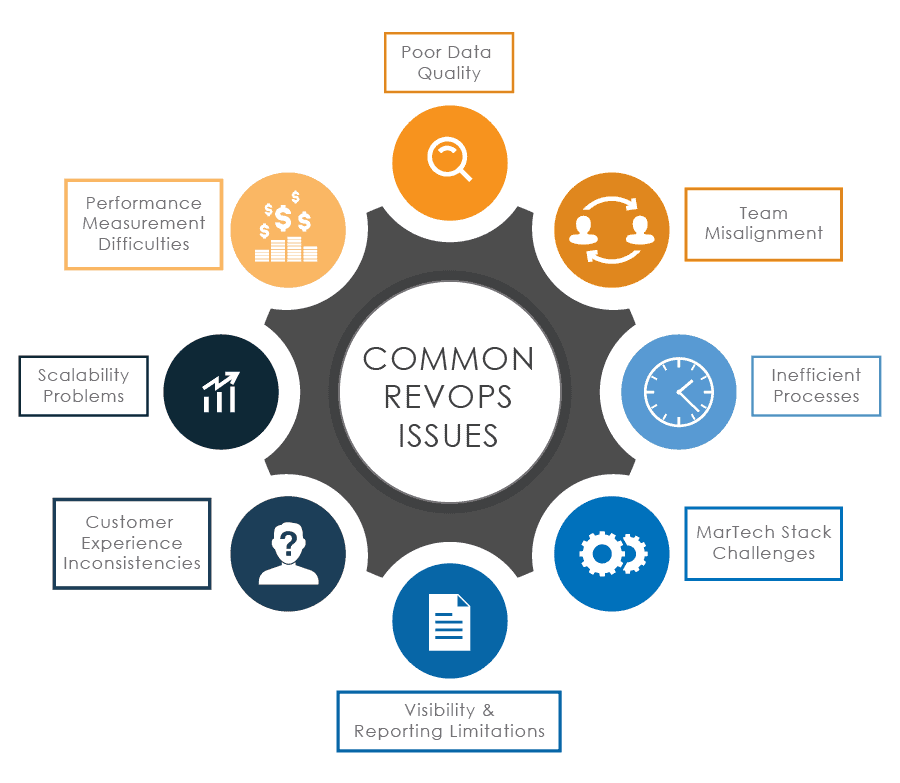
Revenue operations (RevOps) is less of a destination and more of a journey. The question then is: how far along in that journey are you? Maybe you’re new in your role and want to establish a baseline for the efficiency of your RevOps, across marketing operations, sales operations and customer success.
Or, you might be in an existing role, thinking your teams are working well but not seeing the results to back it up. You know that handling RevOps successfully should lead to the right KPIs–and since you’re not achieving those, you want to improve.
Whatever category you fall into, it’s important to determine your current position on the path to RevOps and how to optimize from there.
Topics in This Article:
First, Identify Your Problems
You need to know what your problems are before you can figure out the solution. In RevOps, the issues are often visible, which helps you zero in on your weakest areas and create a plan to strengthen them.
Here are some of the most common problems we see in RevOps within B2B organizations, along with an example of how each might look in practice:
- Data silos and poor data quality
If your sales team’s CRM system is isolated from your other tools, your salespeople may be using outdated customer information. - Team misalignment
This often looks like the blame game, with sales saying a lack of closed deals is marketing’s fault and marketing saying that sales isn’t doing enough with the opportunities they’re providing. If there’s discord between the two teams, and/or with customer success, this needs your attention. - Inefficient processes
An example of this could be the marketing team manually compiling and segmenting customer data from various sources for email campaigns, resulting in old or inaccurate targeting and reduced campaign effectiveness. - MarTech stack challenges
Many organizations adopt practically every tool that sounds promising, without realizing that too many systems can hinder progress just as much as too few can. If you find yourself overwhelmed with your tech stack, or in a situation where your solutions aren’t integrating adequately with one another, there’s some work to be done with your RevOps. - Visibility and reporting limitations
This problem might manifest if your executives cannot access real-time sales performance data across different regions due to fragmented reporting systems, for instance. - Customer experience inconsistencies
If you suffer from this issue, your customers might be getting conflicting information about important details like product availability and pricing from different salespeople, leading to confusion and frustration. - Scalability problems
A lack of optimization with RevOps can hinder scalability. For example, your platform might experience frequent downtimes and slow performance as the user base grows, leading to customer dissatisfaction and increased churn rates. - Performance measurement difficulties
This might play out in customer success if the team struggles to assess customer health and predict churn accurately because of fragmented data sources and inconsistent metrics tracking across different support platforms.

Next, Understand the Solution
Once you’ve identified the most pressing problem(s) to your organization, the next step is to understand the solution.
From an internal perspective, focusing on RevOps will help align the efforts of sales, marketing, and customer success teams to drive cohesive revenue growth. This will ensure these departments work toward common goals with shared metrics and seamless processes. RevOps enhances efficiency and improves data accuracy and decision-making, enabling you to respond swiftly to market changes and customer needs.
Externally, RevOps improves the customer experience by providing a consistent and personalized journey across all touchpoints. It also streamlines processes, integrates technologies and offers real-time visibility into performance metrics, which helps identify bottlenecks and optimize resource allocation.
Are You Ready?
At GNW, we’ve developed a RevOps Readiness Check to help organizations like yours identify which phase of the Revenue Operations journey they fall into, whether Traditional Marketing, Growth Marketing, or RevOps.
Traditional Marketing applies when there is little to no alignment between marketing, sales and the customer success team. Growth Marketing is reflected when there is some alignment, say between customer success and sales, but missing alignment on areas involving marketing or vice versa. RevOps is when the alignment between these three areas is as strong and optimized as it can be.

Our Readiness Check will take you through specific questions that help you clearly see where your organization stands. Paired with the assessment results, you can then leverage our RevOps Framework to map out a plan that addresses which areas might be stuck in Traditional or Growth Marketing.
Ready to get ready for RevOps? Take the Readiness Check today!